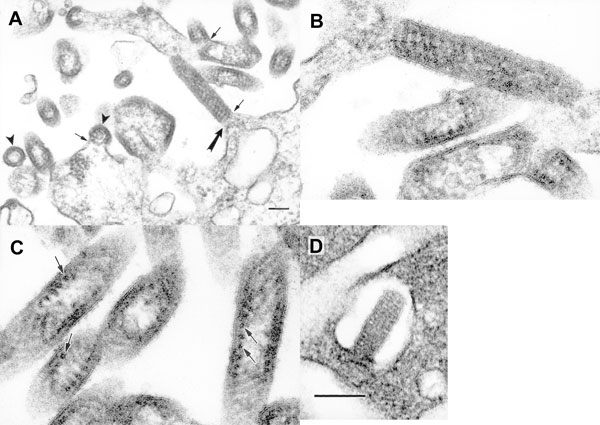Volume 8, Number 6—June 2002
Research
Two New Rhabdoviruses (Rhabdoviridae) Isolated from Birds During Surveillance for Arboviral Encephalitis, Northeastern United States
Figure

Figure. Ultrastructure of the new rhabdoviruses in infected Vero cells. A. Virions of isolate RI-175 budding from the surface of a Vero cell and from cell surface projections (arrows). Arrowheads mark cross-sections of virions. The virion indicated with a large arrow is enlarged in B. B. A virion of isolate RI-175 budding from host cell plasmalemma into an extracellular space. C. Details of the virion ultrastructure of isolate RI-175, showing spiral packaging of the nucleocapsid and its tubular structure in the cross-sections (arrows). D. A virion of the isolate CT-114 budding into an intracytoplasmic vacuole. Bar = 100 nm.
Page created: July 16, 2010
Page updated: July 16, 2010
Page reviewed: July 16, 2010
The conclusions, findings, and opinions expressed by authors contributing to this journal do not necessarily reflect the official position of the U.S. Department of Health and Human Services, the Public Health Service, the Centers for Disease Control and Prevention, or the authors' affiliated institutions. Use of trade names is for identification only and does not imply endorsement by any of the groups named above.